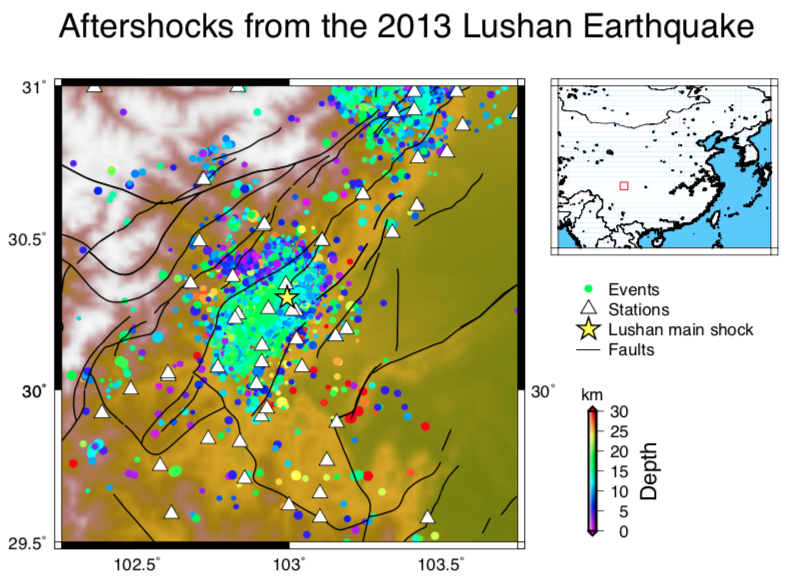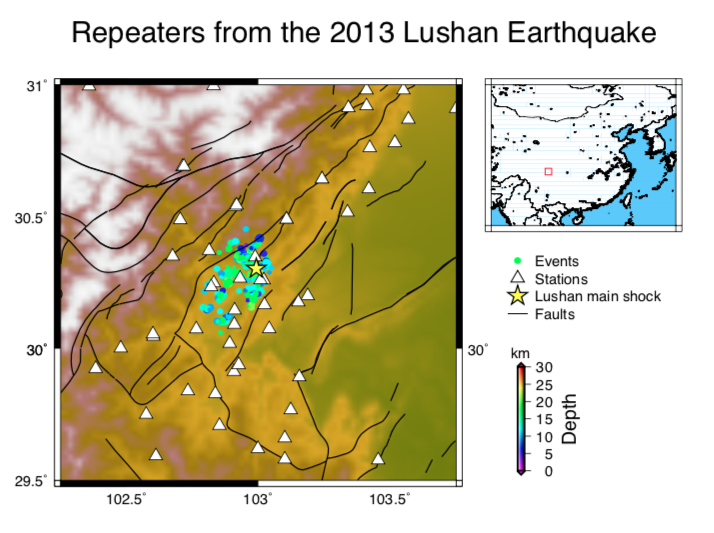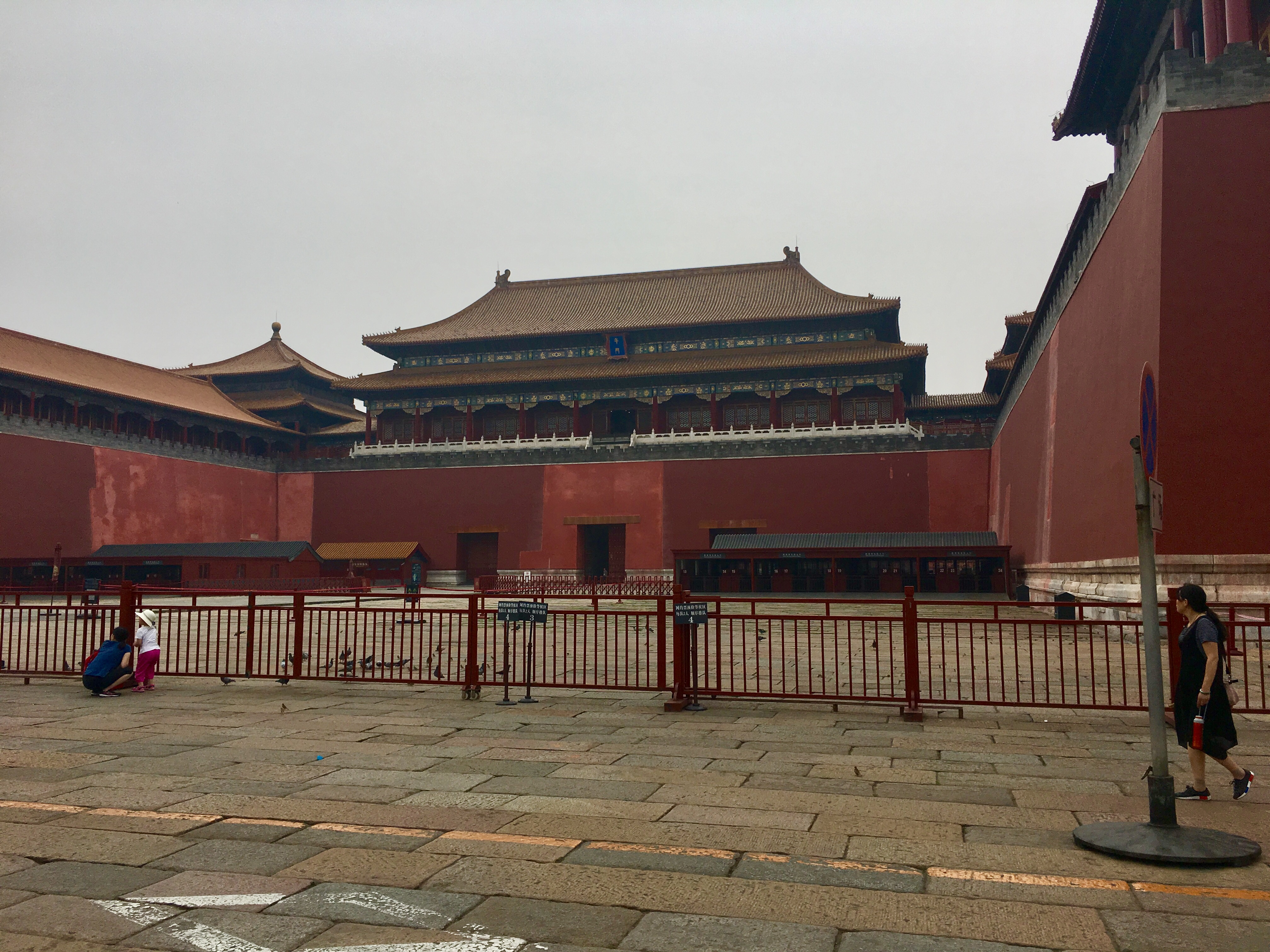Harrison

Harrison is a student at Southern Methodist University currently completing his research at Georgia Institute of Technology under Dr. Zhigang Peng.
My project focuses on identifying and locating possible repeating earthquakes that are associated with the 2013 Lushan Ms7.0 earthquake in China. During this event, slip mainly occurred along the deeper parts of the fault. It is possible that the upper area may be slipping slowly and exhibiting repeating events. By identifying and locating these repeating events, the spatial and temporal evolution of the fault can be better understood.
Week 4
July 3rd, 2018
Mitchell and I have now been in Beijing for over a week and we are getting used to life here. We have become pretty familiar with navigating the city on the subway, grocery shopping, and eating out. Although the language barrier makes certain aspects of daily life difficult, I have found that using a combination of google translate, pictures, and gestures can often be a surprisingly effective means of communication.
One of the most challenging aspects of my project so far has been using GMT. Even though I am mostly just altering scripts that have been previously written, it still is a challenge for me to add or change features on the graphics. Also, some of these scripts were written with commands from previous versions of GMT so I have had to figure out how to write certain things on the new version.
I am happy though that I have finished running the coherence code on the previously identified repeating events and am now in the process of rerunning the cross-correlation with different parameters. Also, all of my scripts are working, including my GMT scripts to plot waveforms for visual analysis. This should allow everything to go smoothly once the cross-correlation is finished.
Here are two maps that I made of my study region. I used files with station and earthquake data, a .grd file for the topography, and a file with the fault polygon data.


Getting Adjusted
June 25th, 2018
This week has definitely been the most exhausting week so far. Mitchell and I landed in Beijing on the 21st and it took us at least three days to get used to the 12-hour time difference. The people at the Institute for Geology and Geophysics here have been very welcoming. Some of the graduate students go to lunch with us, have taken us to get subway cards, and have taken us to cool places in the city. Thankfully, a lot of the graduate students (and younger Chinese people in general) speak English fairly well. Also, many signs and labels are also in English, which makes shopping and navigating the subway a lot easier.
As for my research, I have finished running the coherence code to analyze the frequency-domain correlation between waveforms. I am comparing this to the time-domain cross-correlation to more definitively conclude if the previously identified repeating events are really true repeating events.
After working on the elevator pitch for my project, I have realized how difficult it can be to summarize a whole summer of work all in one minute. It also made me realize which aspects of my project I should learn more about.
Here is my obligatory photo of the forbidden city which was unfortunately closed when we tried to visit yesterday but was still cool from the ouside.

Packing My Bags and My Data
June 19th, 2018
This second week at Georgia Tech was definitely a bit of a rollercoaster. Mitchell and I started the week by having more issues with our visa applications (our third attempt at securing one since the start of May). However, the issues were thankfully resolved by the end of the week and now we both have our visas, but with only a few days to spare. As for work on the project, there were the moments of frustration when codes wouldn’t compile, scripts wouldn’t run, etc. But these feelings were balanced out by the moments when everything managed to somehow work out in the end. By the end of the week, all the needed data was downloaded to my mac and a backup drive and the codes were working.
The data that I am working with is a set of over 600,000 waveforms from around 27,000 events following the 2013 Lushan earthquake in the Sichuan province of China. These events were identified through the matched filter technique and their phases have already been picked. A cross-correlation code and relocation code have been previously used to identify repeating events but the parameters used to determine repeating events are not necessarily the best possible. So my task for now is to evaluate the identified repeating events using a coherence function and use this information to assess the need to rerun cross-correlation with different parameters.
A personal goal as I continue working on this data is to stay as organized as possible and plan ahead. Since the amount of data is so large, each script that I run will take a long time. So, I want to make sure every aspect of each script works perfectly and names/positions all outputs in the right location before running.
Aside from data/code preparation, we have continued to read papers, go through tutorials, and listen to presentations related to our topics given by Dr. Peng and his now former PhD student, Dr. Yao. They have both been extremely helpful and patient, answering all my questions about seismology and programming.
By the time I post again, we will be in Beijing and I will probably have much more interesting stuff to talk about than I do now. But since I didn’t know how to post pictures on here last week, here is a photo from the aquarium that I talked about in my last post.
Week One
June 10th, 2018
Mitchell and I have just finished our first week of work on the project at Georgia Tech after the internship orientation week at New Mexico Tech. The orientation week was a lot of fun and it was really great to meet all of the other interns and the internship organizers. The tutorials were very helpful and I am glad I was able to learn the basics of seismology and the computer methods used in seismology research before I arrived to Georgia Tech. The people and the field trips were amazing and made me feel very lucky to be a part of this program. Although the orientation week was great, I am also excited to be working on my project now. I am enjoying Atlanta and am looking forward to traveling to the Chinese Academy of Science in Beijing on the 20th to work on the project there for the remainder of the summer.
So far, our time has mainly been spent downloading software that we will be using (mainly GMT and SAC), troubleshooting errors, working through tutorials, and learning about the theory behind our projects as well as the steps needed to complete them. In particular, we have spent a lot of time learning about the matched filter technique. The matched filter technique is an automated method of picking earthquake events. It uses a known event waveform template and scans continuous waveform data to find areas with a high correlation, which presumably represent a new event. This method is useful for us to quickly and accurately detect large amounts of small earthquakes over long periods of time so that we can have a better understanding of the spatial and temporal evolutions of the fault.
Everyone in the department has been very welcoming and has included us just as if we were ordinary students in the department. The southern hospitality here has definitely been real. Currently we are staying in apartment-style dorms on campus which makes our walk to work very convenient. We are also very close to downtown, so we decided to go to the Georgia Aquarium this weekend which is the largest in the US. It was absolutely massive and even had three whale sharks which were super cool.
My current goals for each third of my internship are to...
Beginning third:
- Become comfortable using SAC and GMT
- Download all needed data before leaving for Beijing
- Organize data/codes and be able to use shell scripting to interact with both
Middle third
- Run the coherence function code across all identified repeating event waveforms and analyze the results to further evaluate if they are true repeating events.
- Assess the need for rerunning cross-correlation with new parameters across all waveforms in case the current parameters are insufficient to assess if events are repeaters.
- (Possibly optional) rerun the cross-correlation code.
Last third
- Organize all results
- Make figures using GMT
- Write abstract for AGU conference



